Having had a great week’s fishing at Kau Tapen down in Tierra del Fuego (read about it here), we were sad to say goodbye to some of our team who were non-shooters at Buenos Aires domestic airport, Aeroparque. Seven of us came through the luggage area and headed upstairs to the food halls where we had a typically dodgy airport lunch (probably made worse by our poor ordering in Spanish!) and watched Ireland v France in the Six Nations. We then headed through security which was again a breeze, comparatively, had our now standard one-hour delay and headed to Cordoba.
On arrival, we were spotted by the luggage guys hired by David Denies (the company hosting us for the shooting) to help us, they grabbed our bags and soon we were loaded on the bus and heading to Pica Zuro Lodge. Note: Tip money required here for baggage guys. Maria, the house manager, met us and sorted us out with single rooms as a gesture from David Denies and soon we were settling in and ready for dinner.
At dinner, Maria gave us a brief welcome speech telling us about the lodge and how things worked and then Facundo Masa, our guide for the next few days, came to chat with us as well. We talked about guns and decided that we would each use either a 20 bore Beretta or a 28 (kind for fatigue and the shoulder) or a semi-auto for the more adventurous! It is no trouble to ask for two guns and shoot double or even treble guns like they do in Spain! A quick discussion about what gear to bring the next day for this time of year when it is pretty warm by day; shooting glasses/eye protection, ear protection, sun protection (hat and sunscreen), shoulder protection and finally a light waterproof. Clothing should be casual with dull colours (which some of us ignored to no great consequence) and recommended footwear was outdoor shoes/boots. I recommend a good strong sole as many of the bushes and undergrowth are quite prickly and can pierce the sole of a soft-bottomed shoe. A small bag of some sort is useful to carry all the gear in. In our case we all had the green Frontiers’ Field bags, which are excellent for this type of use.
The hall/sitting room at Pica Zuro.
We headed off at 8.30 with an expected drive of about 30 minutes, this is normal for this time of year until June, at other times the drives are more like 15 or 20 minutes.
On the way Facundo gave us the scoop on how the whole dove shooting scene works in Cordoba. The estimated population of Eared doves (there are Inca doves as well which are smaller still) in the region is about 40 million but nobody really knows. The population fluctuates with the amount of food available, which in turn impacts the number of times the doves breed. What they do know is that generally they breed five times a year and have two eggs each time with an 80% success rate of seeing their young through to adulthood. They feed on three main crops, maize or corn, sorghum and winter wheat when the moisture of the soil allows this crop to be produced. If there is no winter wheat they will go on the shoots of the soybean plants when just planted and coming through. This is the worst damage for farmers because it damages a whole new plant not just a few grains taken. As a guide, they are shot in the hill ground or what is known as ‘roosts’ or ‘temporary roosts’ between late June and late February but at some point in the second half of February and mid-March (depending on weather and crop conditions) they start to leave the roosts and head for the fields in earnest where they remain until late June. This is when the harvesting has been done and there is a lot of food available which often tempts the birds to breed again. We shoot them travelling from temporary roosts to feeding areas or water, sometimes in the temporary roost, sometimes just leaving and other times closer to the fields to which they are travelling. It is rare to shoot them actually arriving/landing in the fields to which they are coming to feed because close to the feeding area the birds fly lower and slower. This is more common for pigeon shooting in other areas of Argentina, which is similar to how we often shoot our pigeons.
Before the shooting of doves began in the 1970s, the farmers set poison, which was effective but indiscriminate, killing all types of other birds and mammals. Nowadays, farmers/landowners gain income from the shooting rights for people to shoot on their land and there is decent protection for their crops though neither shooting nor poisoning fully stops crop damage with the population as it is. I cannot tell you that every last dove shot is picked because that is not true: the terrain is often difficult and the brush can be very thick with thorny bushes, and this is why dogs are not used but the field assistants (FAs) do collect what they can find by sight and the doves are donated to local causes. In the case of David Denies, all the birds are cleaned and taken to the Sister Theresa Foundation where over 500 hundred children are fed once a day at 6pm in five different dining rooms. We enjoyed dove breasts rolled in bacon at lunch and ‘dove burgers’ were on the menu card at dinner as well. They are very good if cooked right, crispy on the outside and still pink and tender on the inside.
Our first day was 10th March so the birds were basically travelling out of the roosts to maize fields. We arrived in an area just outside the hill country, it was rolling terrain but not so much so as to present birds higher than they were naturally. There was no messing about on arrival. Facundo made introductions between each guest and his FA and off we went following our man to the position he had prepared. They all had our guns there, at least 500 cartridges ready, a cool bag with drinks, a leather stool etc. Some of us were simply in tall maize, others behind bushes in a field and others in actual hides or blinds. I was in a large hide almost like a grouse butt and it worked very well.
I have to say that I struggled to start with, new place, new gun, natural hesitancy or caution, small and fast birds. By the time I had fired 100 cartridges I felt better about my shooting and put the gun down and headed off with Lucas my bird boy with cameras in hand to visit all the guests. Lucas proved to be an excellent photographic assistant! The team had had the same experience, struggling at first but getting better. The wind was getting up and the doves were starting to come with the wind, low and fast. Earlier they were at every height and direction. The challenge for those in the maize (which was shoulder height) was to take the doves well out in front because if you did not, they were too difficult once upon you and chasing them with the gun was futile. This is a common problem with grouse and pigeon shooting, convincing oneself to be aggressive enough to attack the oncoming bird rather than be defensive and take a pot shot as it flies by. I am not a fine example but I got the guys going and they were delighted, gaining in confidence all the time and really taking some birds early. I moved around everyone and then went back and shot some more on my own with Lucas. From my ‘butt’ I had every conceivable shot, grouse-like birds, crossers, high, medium, I had it all.
Soon, lunch beckoned (it was about 12.30) and time for reflection. The team had loved their morning and was settling in and getting a feel for what they could and could not do and how relaxed the whole set up was. Plans were made for the afternoon about what they would like to do in terms of what kind of birds they were keen to shoot. Despite not being in the hills, there was no talk of birds not being high or challenging enough. Lunch was a fabulous asado (barbecue) of dove breasts, lamb and beef with salad and we even had a fine crème caramel afterwards. Soon, hammocks were being slung for an afternoon nap and I decided to try and photograph these doves in flight while they were not being shot at. They are as tricky as pigeons because they do not hold their line as willingly as game birds but I got a few decent shots and then decided to have a nap too. The nap did not last long because someone was awake and back shooting! Nap over!

 In the afternoon, there was noticeably more shooting partly because there were more birds moving but also because the guests were more comfortable with the set up and were beginning to really enjoy themselves. I found myself in another ‘butt’ but the birds were coming against the wind so Lucas and I built another butt on the other side of the tree we were backed onto, to take the birds coming with the wind which was much more challenging and positively difficult! Again I downed tools and went to visit all the guests and took pictures of them. Some were going for it, others were messing about with a 4-shot semi-auto which is a novel experience for most of us Brits! I had a quick go and was surprised I could shoot with it, I even had a run of four birds with four shots! As the afternoon went on so the guns began to drift together. They had either shot their self-imposed limit of cartridges or simply shot themselves out. We ended up gathered in one of the ‘butts’ and chatting and taking it in turns to shoot in the glowing late afternoon light. Another hour passed and we decided to head home looking forward to massages, which had been pre-arranged for when we returned to the lodge.
In the afternoon, there was noticeably more shooting partly because there were more birds moving but also because the guests were more comfortable with the set up and were beginning to really enjoy themselves. I found myself in another ‘butt’ but the birds were coming against the wind so Lucas and I built another butt on the other side of the tree we were backed onto, to take the birds coming with the wind which was much more challenging and positively difficult! Again I downed tools and went to visit all the guests and took pictures of them. Some were going for it, others were messing about with a 4-shot semi-auto which is a novel experience for most of us Brits! I had a quick go and was surprised I could shoot with it, I even had a run of four birds with four shots! As the afternoon went on so the guns began to drift together. They had either shot their self-imposed limit of cartridges or simply shot themselves out. We ended up gathered in one of the ‘butts’ and chatting and taking it in turns to shoot in the glowing late afternoon light. Another hour passed and we decided to head home looking forward to massages, which had been pre-arranged for when we returned to the lodge.
Pica Zuro Lodge is a nice set up with full facilities. All the guests were again delighted with their rooms which, because Pica Zuro is an old estate house were much larger than in a lodge purpose-built for shooting or fishing guests. The rooms were spacious and the bathrooms even more so, each with old classic shutters over the windows and wonderful huge baths and showers. I liked the contrast between the white and cream linens and curtains etc and the dark wooden floors and old furniture. The sitting room is the central area, which is basically a very large hall. Off it is the bar and dining room with nine bedrooms located around the lodge and in an outside annexe. There are huge verandas with comfortable furniture where guests gathered with a beer from the ‘help yourself’ bar. For those inclined there is a huge swimming pool and a pool table, and of course internet throughout the lodge, but perhaps a little less reliable than at Kau Tapen due to the thick walls of the old building. Guests slowly gathered at the bar after their massages for Hors d’oeuvres or canapes and then we enjoyed another great dinner before bed. Dinner is by menu choice again between a classic meat option and something a little more healthy. The meat options were difficult to refuse! Breakfast was everything from eggs cooked to order to great fresh fruit, yoghurts, cereal, croissants etc. There was amusing chat amongst my group and our two new American friends. The latter putting down a hundred birds on their local walked up shoot were most impressed to meet someone who puts down 23,000 pheasants! I do not think they could fathom that concept having never done driven pheasant shooting. We all hope they will come over and shoot with us some time in the future.



 Everyone knew the drill the following day. We were a longer drive away and this time rather than half in rough hilly ground and half crops we were in the real flat lands, which I have not shot before. The birds were headed to and from sorghum fields in the distance. They lined us up along a large line of trees/hedgerow and the lads cut bush to build blinds for each of us. The shooting swung from birds coming at us in huge numbers to birds coming from behind us in droves. Some of us turned around and others (including me) tried to practice shooting them having come over from behind. This was very quick snap shooting but great fun and very challenging. Most of us moved to a 28 bore for no particular reason but they were offered to us so we gave them a try. David Denies have 120 guns for rent so there is a good selection. I would not say that they are in perfect condition but they worked fine and the boys all carried oil and clearly had a good basic knowledge of how to sort out the most common issues. If a gun did fail, they would simply go and get another. As the afternoon light grew orange we again all drifted together having fired more cartridges than the day before and then headed home for more massages!
Everyone knew the drill the following day. We were a longer drive away and this time rather than half in rough hilly ground and half crops we were in the real flat lands, which I have not shot before. The birds were headed to and from sorghum fields in the distance. They lined us up along a large line of trees/hedgerow and the lads cut bush to build blinds for each of us. The shooting swung from birds coming at us in huge numbers to birds coming from behind us in droves. Some of us turned around and others (including me) tried to practice shooting them having come over from behind. This was very quick snap shooting but great fun and very challenging. Most of us moved to a 28 bore for no particular reason but they were offered to us so we gave them a try. David Denies have 120 guns for rent so there is a good selection. I would not say that they are in perfect condition but they worked fine and the boys all carried oil and clearly had a good basic knowledge of how to sort out the most common issues. If a gun did fail, they would simply go and get another. As the afternoon light grew orange we again all drifted together having fired more cartridges than the day before and then headed home for more massages!

Interesting position, but some birds really did come low like grouse over the maize, they were not feeding on this maize.
On the way home, we chatted about the kind of shooting we were doing. When putting this trip together I had hoped that we would be shooting in the hills. That is the type of shooting I had done in the past in Cordoba and I knew that it offered good high challenging birds. I was therefore a little concerned when on the first evening Facundo told us that the shooting would not be in the hills. My team were all experienced shots but not obsessive shots. They were all generalists rather than guys with an obsession with grouse or Devon pheasants.
The consensus seemed to be that variety, which we had enjoyed, was what everyone appreciated. There was every kind of shot from a classic grouse with the barrels parallel with the ground to good high doves. When in the hills it is possible to place guns so that every bird is very high, it is also possible to place guns at the top of the hills where every bird is like a grouse. We found that without having to move we had every kind of shot. One could also vary the shot by when one chose to shoot at a bird. The most common appreciation no matter how high or low a bird was, was the opportunity to practice taking birds early and at the right time. This was also advisable given that when the doves saw you, they would jink and become very difficult. I think the conclusion we all came to was that from our experience, no matter whether you were in the hills or the flats there was every kind of shot and that is what everyone enjoyed. Our host, Horacio, the manager of the David Denies operation, really summed the whole conversation up by explaining to us that no matter how much we asked to shoot grouse or high pheasants etc and he could provide them having looked after many English groups, these were doves and this was dove shooting and ultimately should be enjoyed as such, a fair point!

The field assistants stack the empties so you can see what you have shot and then they hand them in to be counted.
We had a last morning of shooting before our great sporting adventure was over. We were all rather surprised to learn that it was a 5.30 am wake up and 6.30 departure. We were inquisitive to know why given that our flight back to Buenos Aires was at 4pm so there was no need to rush the shooting. The plan was to shoot doves leaving the roost early about fifteen minutes from the lodge. The plan for me was to see the first few hours, shoot and photograph and then whizz off to the sister lodge La Dormida to see it while the shooting was quieter later on. A bit bleary eyed we drove out to the shooting at 6.30 relieved because it had been pouring with rain during the night and even as we sat at breakfast the rain was pounding outside but the skies cleared for a beautiful morning with perfect timing. On arrival, the boys were anxious for us to grab our gear and get into position and pretty quickly we could see why. There were coveys of doves pouring from the rough ground, one after the other after another. Today, we decided to shoot in pairs for some fun and bit of a social time. James and I decided to shoot together and once we saw what was happening we were anxious to get sorted and start shooting. The next hour was some of the most spectacular shooting I have ever enjoyed. Packs of doves poured out of the horizon just like grouse (excuse the comparison Horacio) and we set about them as best we could trying to take them well out in front before they jinked as they saw us. It was truly wonderful shooting and intense and non-stop. Eventually, I was disciplined enough to put down the gun and take some photos and go and see the others, and James was just exhausted and decided to come with me to see the others and enjoy the moment. It was a beautiful morning and the shooting had already been spectacular.
By 10am the shooting had slowed considerably from its early intensity so I headed off to La Dormida as planned. The others continued for another hour and headed back to the lodge to pack. La Dormida was in a very pretty setting which was enhanced by the lovely day. The drives from La Dormida are more even at about 20-25 minutes no matter what or where you are shooting. The lodge is set up a track in a small valley tucked away from everywhere. It was built specifically as a shooting lodge by David Denies so some would find it more practical for the job with no old plumbing but others might see that as less characterful. I would be happy at either really. For groups, Pica Zuro has an advantage because one can raise the necessary size of group to take Pica Zuro privately and earn the group a free/discount yet still have nine single rooms. This does not work as well at La Dormida but at La Dormida, it is easier to take it privately as you need less people in your team. They may have to share however. La Dormida is very colourful with a really nice open sitting/dining room and colourful bedrooms all with ensuite bathrooms. There are lawns sweeping away from the lodge and nice garden in the middle of the quad, which is perfect for barbecues in the evening. I think the choice between the two needs to be talked through based on the group’s preferences.
Back to Pica Zuro for lunch and checking out which involves going over one’s gun rental and cartridge bill with Horacio. Tips to the field assistants are done in the field whereas tips to the guide and house etc can be done at the lodge and within ones bill if you want to pay everything including tips on a credit card. There is a fee for using credit cards. Cartridges are currently $13.25 a box so 3000 over three days is $1,590 and gun rental is $70 a day. Tips are about $40 – $50 a day to your field assistant and $40 – $50 a day to be shared by the guide, drivers etc and the same to leave with the house staff.
We were sad to leave. Everyone loved the shooting and had a great time and I do not think there was anyone who was not contemplating a return. Check-in at the airport was quiet and easy and other than the customary one-hour delay everything was very smooth with security yet again, very easy. Our last evening, we were back at Fervor (http://www.fervorbrasas.com.ar/) where we ended the week with our last piece of wonderful meat before beginning diets on the British Airways flight back to the UK the next day. Again, the international departure process was easy and though the flight is long, it is nice not to be changing planes before landing in London.
Admittedly everything was in our favour from start to finish but it was one hell of a sporting trip. We had a superb group, the fishing could have been better with improved conditions but the river was kind to us. The shooting was wonderfully relaxed and superb and all our flights and connections worked well. With huge sea trout in a spectacular place and incredible shooting, the classic Argentine ‘cast and blast’ has to rank as one of, if not ‘the’ top sporting holiday there is.
With many thanks to Nervous Waters and David Denies for looking after us all so well.



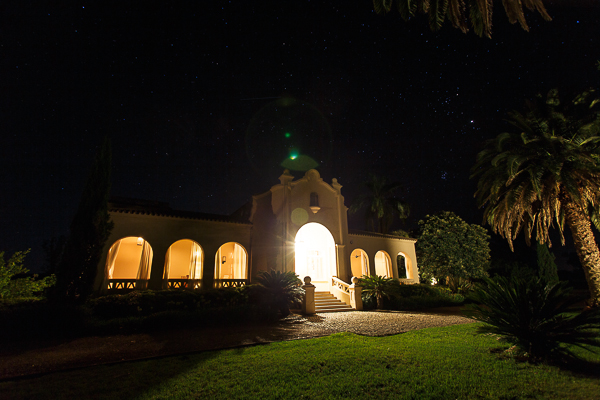














































































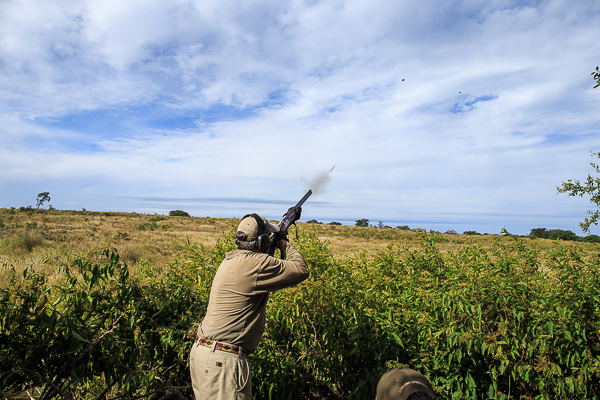




























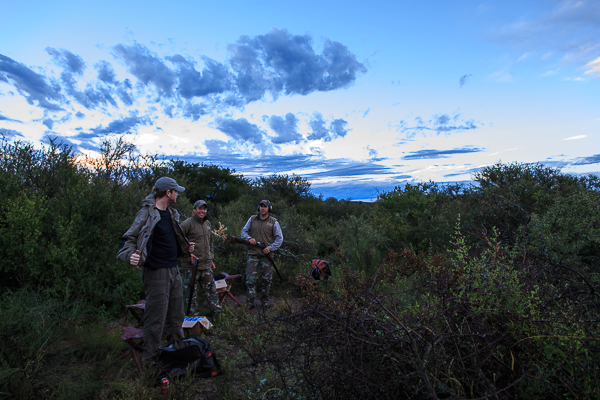


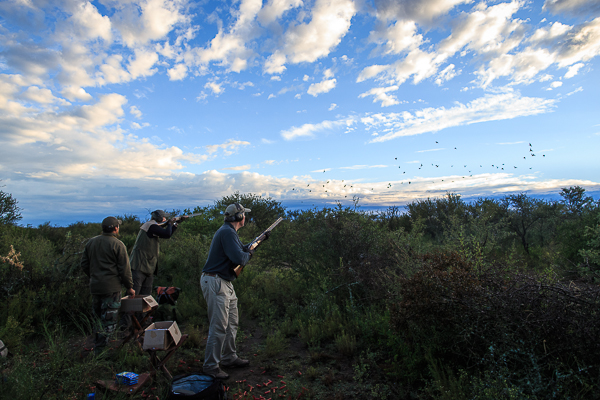







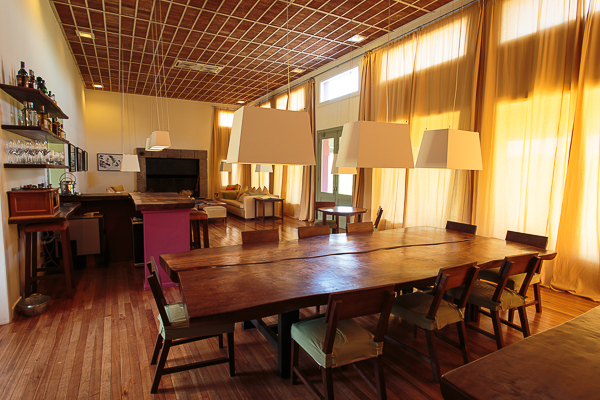



Comments 1
Pingback: Rio Grande, Kau Tapen Lodge, 2nd to 9th March 2013 | Fieldsports, Photography and Frontiers